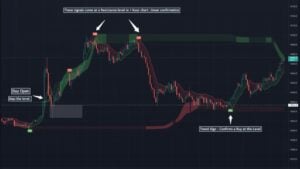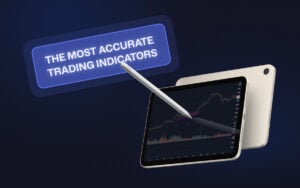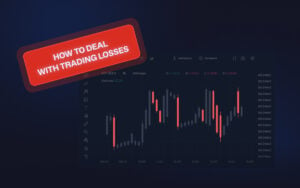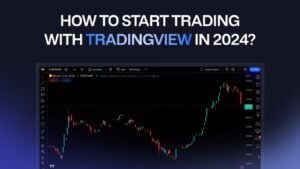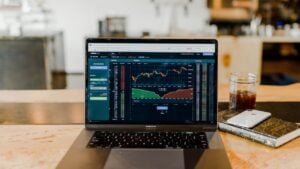Trading with volume
Trading with volume can be a powerful tool for any trader. Volume measures the amount of buying and selling activity in a given security or market. By understanding how to use volume in trading, you can gain an edge over other traders and increase your chances of success. This guide will provide a complete beginner’s guide to using volume in trading, including how to interpret volume data, how to use volume to identify trends, and how to use volume to make trading decisions. With this knowledge, you can become a more informed and successful trader.
What is Volume in Trading? How Does it Work?
Volume in trading is a measure of the amount of a security that is traded over a given period of time. It is typically measured in units of shares, but can also be measured in terms of contracts or other financial instruments. Volume is an important indicator of market activity and can be used to identify trends and potential trading opportunities.
Volume is typically measured on a daily basis, but can also be measured over longer or shorter periods of time. Volume can be used to identify the strength of a trend, as well as to identify potential reversals. When volume is high, it indicates that there is a lot of interest in the security and that the trend is likely to continue. Conversely, when volume is low, it indicates that there is less interest in the security and that the trend may be reversing. Overall, volume is an important indicator of market activity. By monitoring volume, traders can gain insight into the strength of a trend and identify potential entry and exit points.
Volume to identify support and resistance levels
Volume can also be used to identify potential support and resistance levels. When volume is high at a certain price level, it indicates that there is strong pressure at that level. Conversely, when the volume is low at a certain price level, it indicates that there is a lack of interest around this level.
Volume to identify entry and exit points
Volume can also be used to identify potential entry and exit points. For example, breakout traders want to enter the breakout trade if there is a significant volume, confirming a high interest when the price breaks out. Traders use volume to find areas to exit their position. For example, if the price move has great volume and suddenly the volume decreases significantly, indicating that market participants are uncertain and are not willing to execute orders at these prices. A good place to secure some profit.
How to Use Volume to Set Stop Losses and Take Profits in Trading
Setting stop losses and take profits is an important part of trading. Stop losses and take profits are used to limit losses and maximize profits. Volume is an important tool for setting these levels.
Stop losses are used to limit losses on a trade. They are placed at a certain price level below the entry price. When the price reaches the stop loss level, the trade is automatically closed. The size of the stop loss should be determined by the amount of risk the trader is willing to take. Volume can be used to determine the size of the stop loss. If the volume is high, the stop loss should be placed further away from the entry price. This will give the trade more room to move before it is closed.
Take profits are used to maximize profits on a trade. They are placed at a certain price level above the entry price. When the price reaches the take profit level, the trade is automatically closed. The size of the take profit should be determined by the amount of profit the trader is looking to make. Volume can be used to determine the size of the take profit. If the volume is high, the take profit should be placed further away from the entry price. This will give the trade more room to move before it is closed.
In conclusion, volume is an important tool for setting stop losses and take profits. By using volume, traders can determine the size of the stop loss and take profit levels. This will help them limit losses and maximize profits.
How to Use Volume to Gauge Momentum in the Market
Volume is an important indicator of market momentum. It is used to measure the amount of buying and selling activity in a security or market. By tracking volume, investors can gauge the strength of a trend and make more informed decisions about when to buy and sell.
Volume is typically measured in terms of the number of shares traded in a given period of time. When volume is high, it indicates that there is a lot of interest in the security or market. This can be a sign of a strong trend, as more investors are buying and selling the security. Conversely, when volume is low, it indicates that there is less interest in the security or market, which could be a sign of a weak trend.

Volume can also be used to identify potential reversals in the market. When volume is high and then suddenly drops off, it could be a sign that the trend is about to reverse. Similarly, when volume is low and then suddenly spikes, it could be a sign that the trend is about to reverse.
In addition to tracking volume, investors should also pay attention to other indicators such as price action and technical analysis. By combining these indicators, investors can get a better sense of the overall market momentum and make more informed decisions about when to buy and sell.
How to Use Volume to Spot Reversals in the Market
Spotting reversals in the market can be a difficult task, but one of the most reliable methods is to use volume.
When the volume of a security is increasing, it indicates that there is strong buying pressure and the trend is likely to continue. Conversely, when the volume of a security is decreasing, it indicates that there is weak buying pressure, and the trend may be reversing.
One way to use volume to spot reversals is to look for divergences. A divergence occurs when the price of a security is moving in one direction while the volume is moving in the opposite direction. For example, if the price of a security is falling, but the volume is decreasing, it could be a sign that the trend is about to reverse. Our Volume Delta indicator can be used to spot great volume divergences.

Another way to use volume to spot reversals is to look for volume spikes. A spike occurs when the volume of security suddenly increases significantly. This could be a sign that the trend is about to reverse, as the sudden increase in volume could indicate that investors are taking profits or selling off their positions.

A more sophisticated and professional approach is to analyze the volume climax and volume exhaustion.
Finally, investors can use volume to spot reversals by looking for exhaustion. Exhaustion occurs when the volume of a security suddenly decreases significantly. This could be a sign that the trend is about to reverse, as the sudden decrease in volume could indicate that investors are no longer interested in buying the security.

By using volume to spot reversals, investors can gain insight into the strength of a trend and identify potential opportunities. However, it is important to remember that volume is just one indicator and should not be used in isolation. Investors should always use other indicators, such as price action and technical analysis, to confirm their analysis.
How to Use Volume to Identify Trends in the Market
Volume is an important indicator of market trends, as it can provide insight into the strength of a trend. By analyzing the volume of a security, investors can identify whether a trend is likely to continue or reverse.
When the volume of a security increases, it indicates that more investors are buying or selling the security. This can be a sign of a trend in the market. For example, if the volume of a security increases significantly, it may indicate that the security is in a strong trend.
By analyzing the volume and volatility in the market is a common approach by professional traders.
Common Questions and Answers
1. What is Volume in Trading?
Volume in trading is the number of shares or contracts traded in a given period of time. It is used to measure the liquidity of a security or market.
2. How is Volume Used in Trading?
Volume is used to measure the strength of a trend. If the volume is increasing, it indicates that the trend is gaining momentum. If the volume is decreasing, it indicates that the trend is losing momentum.
3. What are the Benefits of Using Volume in Trading?
Using volume in trading can help traders identify potential entry and exit points. It can also help traders identify potential support and resistance levels. It can help traders identify trends, and determine the strength of a trend. Volume can also be used to identify potential reversals and breakouts.
4. What are the Risks of Using Volume in Trading?
Using volume in trading can be risky if traders do not understand the underlying market dynamics. It is important to understand the underlying market dynamics before using volume in trading.
5. What are Some Tips for Using Volume in Trading?
Some tips for using volume in trading include: understanding the underlying market dynamics, using volume to identify potential entry and exit points, and using volume to identify potential support and resistance levels. Additionally, traders should always use stop-loss orders to protect their capital.
Volume is Key
Volume is an important tool for traders to use when trading. It can help traders identify trends, identify potential entry and exit points, and even help them determine the strength of a trend. Volume can also be used to identify potential reversals and breakouts. By understanding how to use volume in trading, traders can gain an edge in the markets and increase their chances of success.

